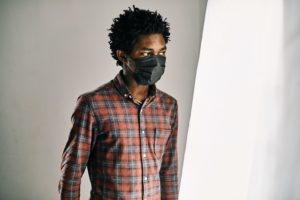Pandemic fatigue is real and it’s bad:
We’re thirteen months into a global pandemic and in many parts of the world, the third wave is proving more frightening and destructive than the first two. Aside from the toll it has taken on our health, our lives, and our livelihoods, it’s wreaked havoc on our mental health. One consequence of the never-ending barrage of bad news is pandemic fatigue. It’s a very real and very challenging mental health condition that we need to address.
Recently, I read an article in Greater Good Magazine about how pandemic fatigue is making us “antisocial.” That got me thinking, because the writer, Kira M. Newman — like many non-clinicians — used the term, “antisocial,” incorrectly. What she meant to say was that pandemic fatigue is making us asocial. An excellent blurb in The Swaddle explains the difference between antisocial and asocial.
Antisocial or asocial?
Essentially, antisocial behavior is destructive and goes against the norms and rules of society, whereas asocial behavior is simply a withdrawal from social contact. Once we understand this distinction between these two terms and read Ms. Newman’s article as referring to asocial behavior, it all makes sense.
Now, I want to talk about pandemic fatigue. How do you know if you have it and what do you do if you’ve got it?
What is pandemic fatigue?
I define “pandemic fatigue” as a feeling of being overwhelmed and over-loaded – like you can’t take any more of the negative things associated with the pandemic: the restrictions, the loss, the bad news, the stress.
In the Greater Good article, Ms. Newman talks about how people with pandemic fatigue are withdrawing socially, because they feel they have nothing to give, but this is only one of the many consequences of pandemic fatigue.
Another way of thinking about pandemic fatigue is to compare it to battle fatigue – something that soldiers experience in combat situations where they face intense, unrelenting stress and distress.
Stress Disorders:
Today, we characterize these reactions as “stress disorders,” like the milder Adjustment Disorder, the immediate reaction of Acute Stress Disorder, or the more chronic condition of Posttraumatic Stress Disorder (PTSD).
If you’re experiencing any of these phenomena, you’re likely to have some or all of a whole constellation of symptoms. These could include anxiety, agitation, low energy and motivation, tearfulness, poor sleep, nightmares, irritability, social withdrawal, forgetfulness, poor concentration, jumpiness, changes in appetite, and poor self-care.
If you’re experiencing any of these symptoms, you could be suffering from pandemic fatigue and you could probably benefit from speaking to someone about how you’ve been feeling.
You could also really benefit from engaging in some Mindfulness meditation, doing regular outdoor exercise, eating more vegetables, cutting down on your consumption of the news and turning off the social media for a few hours, each day.
Of course, you should never blame yourself when you’re experiencing any mental health problem, but at the same time, it’s a good idea to see if there’s anything you’re doing that might be making you more likely to be experiencing some version of pandemic fatigue.
The people who are most likely to develop pandemic fatigue aren’t necessarily the front-line workers or medical professionals who are risking their lives every day to keep the economy running and to save lives. In my experience, those most susceptible to developing pandemic fatigue are those whose lives are less meaningful and purpose-driven than they could be.
The pandemic has brought into focus the way we live our lives and the way we cope with stress. Those who are more resilient and resistant to developing pandemic fatigue appear to be the people whose lives are focused on achieving goals that arise from their value systems.
Internally-driven vs. externally-driven:
I’ve identified two groups of people who are experiencing the pandemic quite differently: there is the group that’s internally-driven and that’s less susceptible to developing pandemic fatigue, and the group that’s externally driven and more at risk. Let me explain.
People who are internally-driven are motivated by their ideals, their beliefs and their desire to live a meaningful life and make a contribution. They strive to excel in all their endeavors, as this brings them a sense of mastery and profound satisfaction.
These people feel the stress of the pandemic like anyone else, but their purpose-driven existence is deeply fulfilling and nurturing and it protects them from developing a stress disorder; for example, pandemic fatigue.
People who are externally driven are motivated by external goals, like wealth, beauty, fame, materialism, power and influence. they seek to accumulate more and more and they fear losing their advantages.
These individuals are exquisitely vulnerable to any stresses that challenge their goals or take away what they already have — stresses like a global pandemic.
Internally-driven people cope better with stress because they have a deep well of inner fulfillment. These people can handle the deprivations and losses of the pandemic and they’re able to defer their need for gratification because they already feel full, inside.
Externally-driven people struggle to cope with stress because they lack that deep well of inner fulfillment. They’re unable to defer gratification and so they’re more at risk of doing impulsive things in order to compensate for their growing sense of malaise brought on by the deprivations of the pandemic.
Another distinction between internally-driven and externally driven people is that the former group, when under stress, turns to highly adaptive coping strategies. They throw themselves into the things that always make them feel good: meaningful work, helping others, creativity, mastery of a skill, personal growth, and good self-care.
Distraction, stimulation, and numbing:
The latter group, being externally-driven, throws itself into distraction, stimulation and/or numbing activities. They turn to substances like drugs and/or alcohol to dull the pain; they over-eat comfort foods to distract themselves from all the bad news; they over-spend or gamble to alleviate the ongoing boredom and loneliness. All of these activities are empty and unfulfilling, and many have unforeseen negative consequences, as well.
People who are coping the best with the pandemic are those who are pursuing meaning, purpose and real fulfillment. So, if you’re suffering from pandemic fatigue, one obvious answer is to shift your focus inward and consider how you can make your life more meaningful and purpose-driven, right now.
Ask yourself: What do I care about? You can put some time and energy into contributing to a good cause. That will bring you deep fulfillment and mitigate against your pandemic fatigue.
Also, ask yourself: What am I passionate about? You can get involved in a project that matters to you – whether it’s creative, associated with social justice, or related to physical fitness goals – and again, it will bring you fulfillment and lessen any potential reactions to the stress you’ve been experiencing these days.
If you’re already mired in pandemic fatigue, you might need therapy and possibly medications as well. Stress disorders are significant conditions and can be difficult to resolve without treatment. Once a stress disorder has become entrenched, you’re unlikely to get over it on your own. That’s not your fault – it’s just the nature of the human brain.
If you’re feeling like you’re on the verge of having pandemic fatigue, try shifting your focus inward and it’s likely that you’ll avert the worst. These are challenging times, and it can be very helpful to know what you can do to protect yourself from the scourge of pandemic fatigue.
___
Sign up here for my free biweekly wellness newsletter that brings you fresh, thought-provoking content.
Subscribe to my YouTube Channel where you’ll learn simple tips for taking the best care of yourself and your loved ones.
Tune in to my Ruthless Compassion Podcast where I go in-depth about topics like mental health, trauma, and loneliness.




